

Dudley Caving Club
(Formerly Dudley Cave Rescue Team)
TO CONTACT US:
Phone: Keith Edwards on 01527 831063 or 07939 042467
or e-
Website designed, created and maintained by Keith Edwards. Copyright Dudley Caving
Club 1997 -
Caving and mine exploration are activities with a risk of personal injury or death. Participants in such activities should be aware and accept these risks and be responsible for their own actions and involvement. Through its association with the BCA Dudley Caving Club recognises that correct training is one way of minimising such risks and provides opportunities for training.
General Caving Techniques
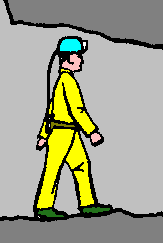
 Walking
Walking
Many newcomers think that all cave passages are small squalid affairs. This is simply
not true and in fact walking is the most common way of making progress through a
cave system. Passages fifty to a hundred feet high are not uncommon. Unfortunately
the floor of these passages is not usually flat and even. Often large passages have
boulder strewn floors and the boulders must be scrambled over, squeezed under or
traversed around. Sometimes the passage is tall but very narrow -
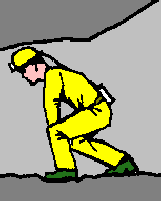
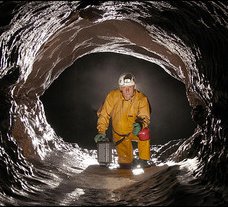 Crouching
Crouching
When the roof lowers to four or five feet then the caver must stoop. Moving in this
way for any length of time is very tiring -
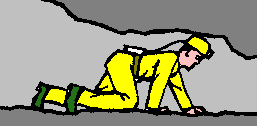
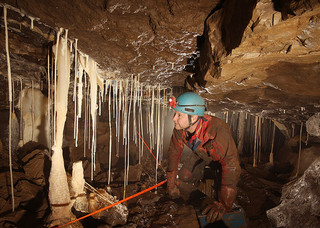 Crawling
Crawling
Where the cave roof lowers even further the caver is forced onto hands and knees. This is one of the few occasions which favours the caver of shorter stature. When the roof becomes even lower the undersized caver can happily crawl along while the lofty cave explorer is forced onto his/her belly. Good quality knee pads are essential when tackling long passages of this nature.
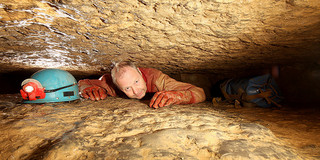 F
F lat-
lat-out Crawls/Squeezes
When the gap between the roof and the floor is a eighteen inches or less the caver
is forced onto his/her belly. Forward progress in flat-
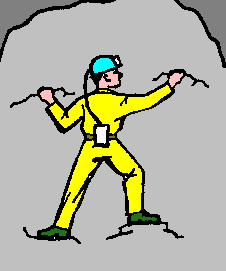
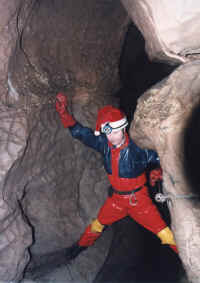 Traversing
Traversing
Traversing is probably best described as negotiating a cave passage at some height from the floor. This may be because the passage is too narrow at the base or as a means of passing over a hole in the floor of the passage or to get to a higher level passage. Often narrow keyhole passages are negotiated by traversing along the roof tube with one foot on each side of the passage.
 Chimneying
Chimneying
Short pitches in narrow rift passages can be ascended by the chimneying technique illustrated here. Fairly smooth walls can be climbed by jamming the body against one wall and by pushing with the legs on the other one.
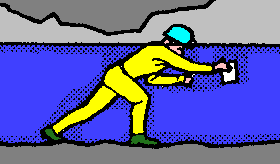 Ducking
Ducking
It is streams that carve out caves and sooner or later as a caver descends a cave
system a stream will be met. Following a stream is always great fun -
Where the cave roof nearly touches the water we have a duck. Depending on the air space the caver may have to remove his/her helmet and position the head sideways or "duck" below the surface or the water.
 Sump Diving
Sump Diving
Here the cave roof dips below the level of the stream. It is only possible/advisable to free dive very short sumps. All sumps should have a dive line through for the caver to follow.
